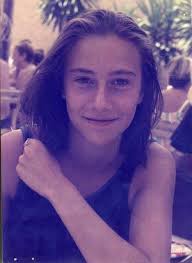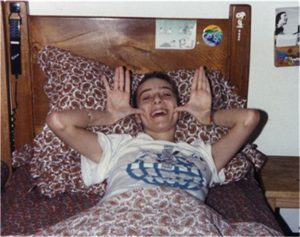
.
By Sarah Bedia
Her life of heroic virtue is a reminder that very ordinary people can become saints.
Blessed Chiara Badano, (1971-1990), was an ordinary Italian teenager with an extraordinary spiritual strength. Ruggero and Maria Teresa Badano struggled with infertility for the first eleven years of their marriage. They lived in the village of Sassello, located in northwestern Italy, close to Genoa. After many prayers for a child, they had a daughter, Chiara, in 1971. Ruggero was a truck driver, and Maria Teresa left her factory work to be a stay-at-home mother. They were a happy family, devout in the Catholic faith. They attended an active parish and took part in many of the activities there. Chiara had a natural affection for needy people, especially the elderly.
Chiara Joins the Focolare Movement
When Chiara was nine, she attended a meeting of The Focolare Movement for the first time. This group was founded in northern Italy in the 1940’s by Chiara Lubich, and is one of several lay movements to spring up in the Catholic Church in the twentieth century. Its charism is mainly focused on Christian unity and seeing to the needs of the poor. The Focolare Movement group meetings helped Chiara tremendously, giving focus to her faith, and inspiration for her future. She was a diligent student, but she struggled academically, even failing her freshman year of high school. She had an active social life, and especially enjoyed meeting her friends at a coffee shop. She enjoyed dancing and singing, and frequently participated in sports such as swimming and tennis.
By all appearances, Chiara was a normal, active, happy teen. However, even during these years of her youth, she possessed a remarkable spiritual life. She had a great devotion to the Holy Spirit. She recognized that the suffering of each person was also the suffering of Christ, and she was resolved to do what she could to alleviate it. She aspired to become a doctor and work in Africa. When Chiara was sixteen, she made a pilgrimage to Rome for a Focolare Movement event, and it was a pivotal experience for her. She met Chiara Lubich, who taught her to be a “spouse of Jesus Forsaken” Mrs. Lubich became a special mentor for her, and the two wrote to each other regularly. To symbolize her new found purpose in life, she asked for a new name from Mrs. Lubich, who called her “Luce”, meaning “light”. From then on she was known as Chiara Luce, meaning clear light.
Cancer Diagnosis
During the summer of 1988 and just after the Rome pilgrimage, Chiara felt a sharp stinging pain in her shoulder while playing tennis. She ignored it, but when  it persisted, she saw a doctor and underwent tests. The diagnosis was a grim one, osteosarcoma with metastasis, a rare and painful bone cancer.
it persisted, she saw a doctor and underwent tests. The diagnosis was a grim one, osteosarcoma with metastasis, a rare and painful bone cancer.
After her first treatment, she returned home and closed herself in her room for a long time, where she underwent a mighty spiritual struggle. She emerged with a smile after her “yes” to Jesus and never turned away from her resolve to accept her cross with peace and even cheerfully. From then on, her life was filled with tests, treatments, and hospitalizations, all of which she bore with admirable patience, impressing even her doctors.
As her illness progressed, she refused all offers of morphine in order to be fully aware. She offered her many sufferings for four primary intentions: for her diocese, for the Focolare Movement, for the foreign missions, and for youth. She gave her life savings to a friend who was going to work in an African mission. She joined her sufferings with those of Christ on the Cross, giving them great redemptive value. This was a near-constant endeavor for Chiara, as she would say, “For You, Jesus” when a piece of her hair fell out or as the chemical drip entered her body.
A Cheerful Witness and Inspiration
Her cheerful acceptance of God’s will was a witness and inspiration to her caregivers and visitors, whom she informed that she knew she was “enveloped in a beautiful design.” When it became apparent that her treatments would not be successful, she began to plan her “wedding”, which is how she perceived her death and expected union with Christ. She chose the songs, flowers, and Scripture readings for her funeral Mass and requested to be buried in a white dress. She died, invoking the Holy Spirit, October 7, 1990, at age eighteen. Her funeral was attended by thousands of people, and the mayor of Sussello closed all public offices so that more people could attend.
Blessed Chiara Luce Badano did not do or write anything remarkable. Her legacy was her great love for Christ and for others. Her life of heroic virtue is a reminder that very ordinary people can become saints. Her bishop began the process for her beatification nine years after her death. In 2008, after her life was scrutinized by the Vatican’s Congregation for the Causes of Saints, she was declared venerable. After an Italian boy recovered miraculously after his parents invoked Chiara’s intercession, she was beatified by Pope Benedict XVI in September of 2010.
